The richness of life in prairies can be astounding, even at a small scale. As a prairie ecologist, I see that every day as I wander through them with my camera or clipboard, but it can be hard to portray that to a skeptical public.
Photography has been a crucial tool in my crusade, giving me the opportunity to introduce people to the plants and animals that inhabit what so many people consider “boring grassy areas”.
In 2018, I undertook a new project to celebrate the diversity and beauty of prairies. It was a way of doubling down on my frequent assertions that you can find an astounding number of species in prairies if you just take the time to look for them.
To prove the point, I went to a small restored prairie near my Nebraska house and then chose a much smaller portion of it – a 1×1 meter square – and pledged to photograph everything I could within that diminutive fragment over the course of a year.
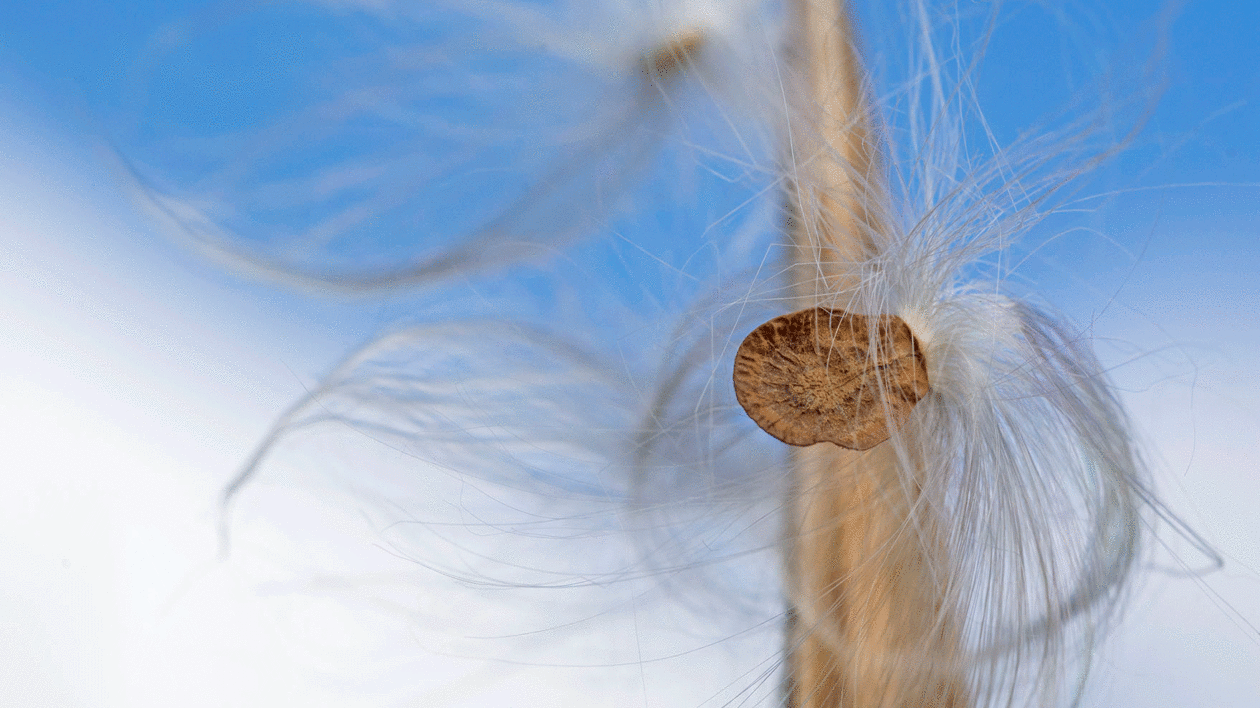
I began in late January, 2018. As of today, I’ve photographed 113 different species of plants and animals inside that little patch – not counting others that flew, scurried, or hopped away before I could snap their picture. I’ve made nearly 50 trips across town to my plot and have yet to come away disappointed. During the field season, nearly every visit yielded at least one new species.
Clearly, most of the species I photographed within my plot didn’t spend their entire lives within that tiny area.
The diversity I found was dependent upon the surrounding prairie, though even that larger prairie is only a few acres in size and fragmented by several patches of trees. The prairie is also fairly new – planted by Prairie Plains Resource Institute in the early 1980’s.
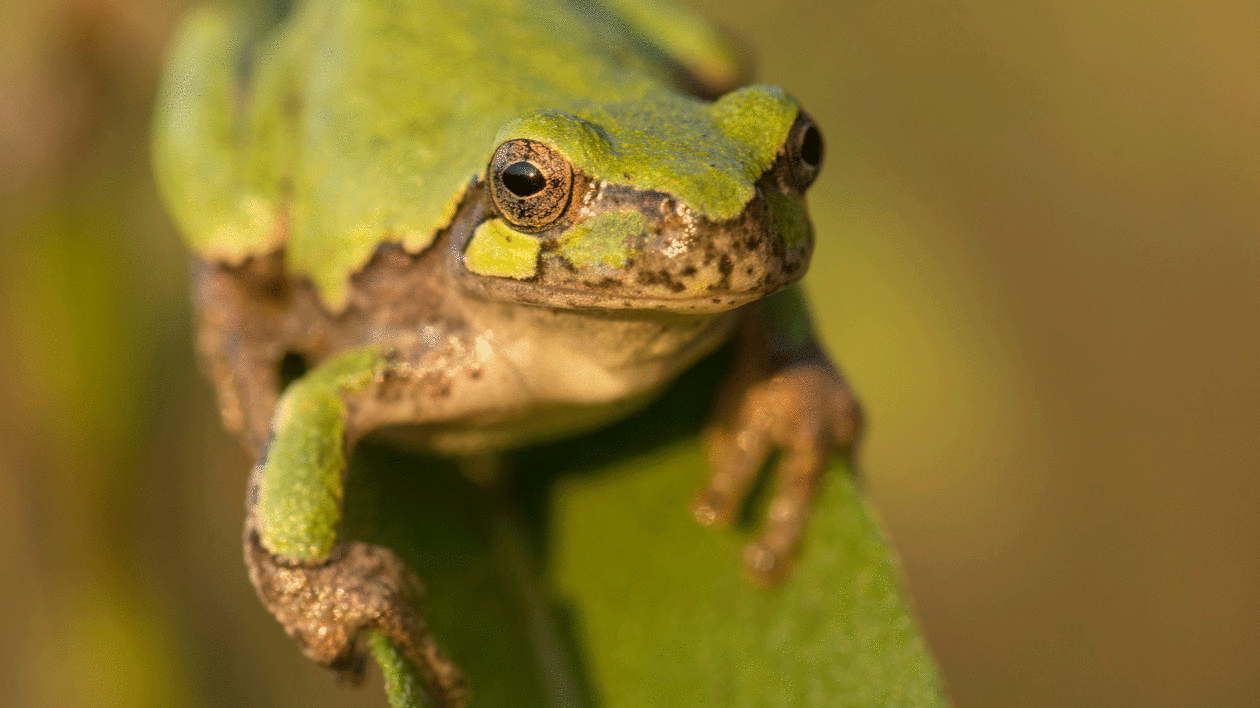
Many people might be surprised to find 113 plant and animal species within a small unassuming prairie nestled between a suburban neighborhood and a corn field, let along within a single square meter of it. That is pretty much the crux of the project.
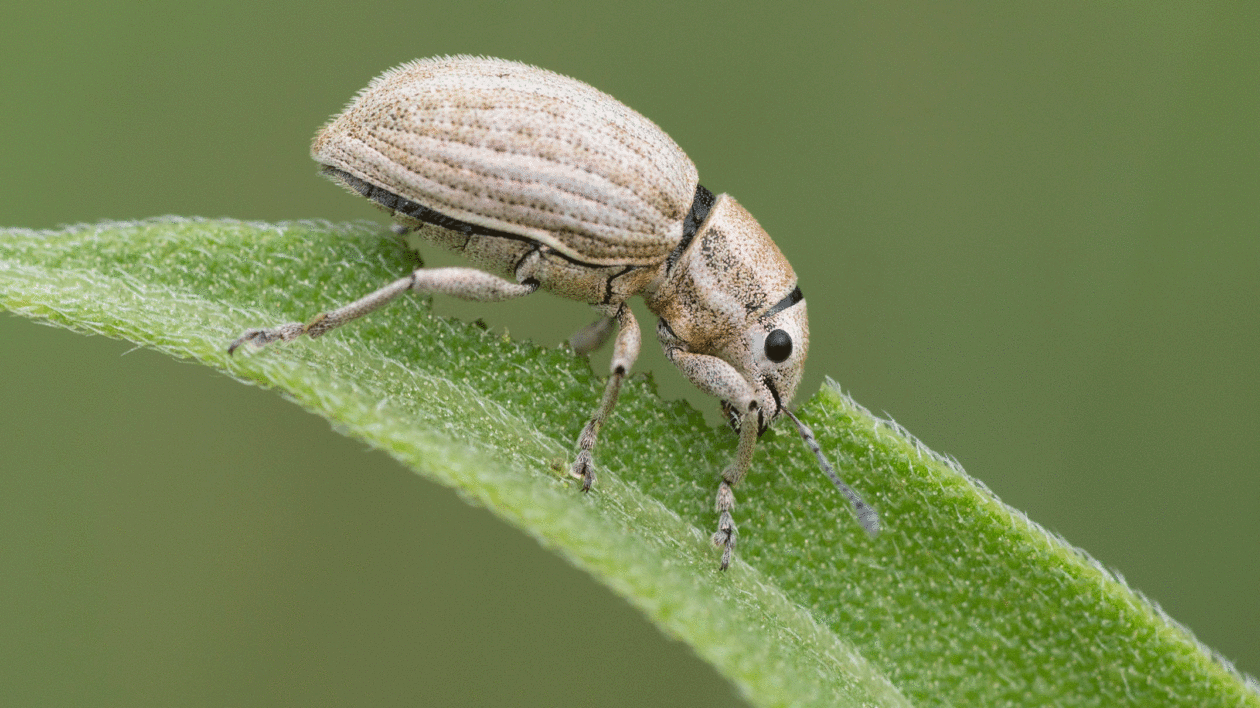
Among the eighteen beetle species is bright red one that, like monarch caterpillars, feeds exclusively on milkweed plants. Another decapitates sunflowers so it can lay eggs inside the exposed stem.
The seven spider species I found within the plot represent a range of hunting strategies, including some that catch food in webs, but also some that stalk and/or ambush their prey.
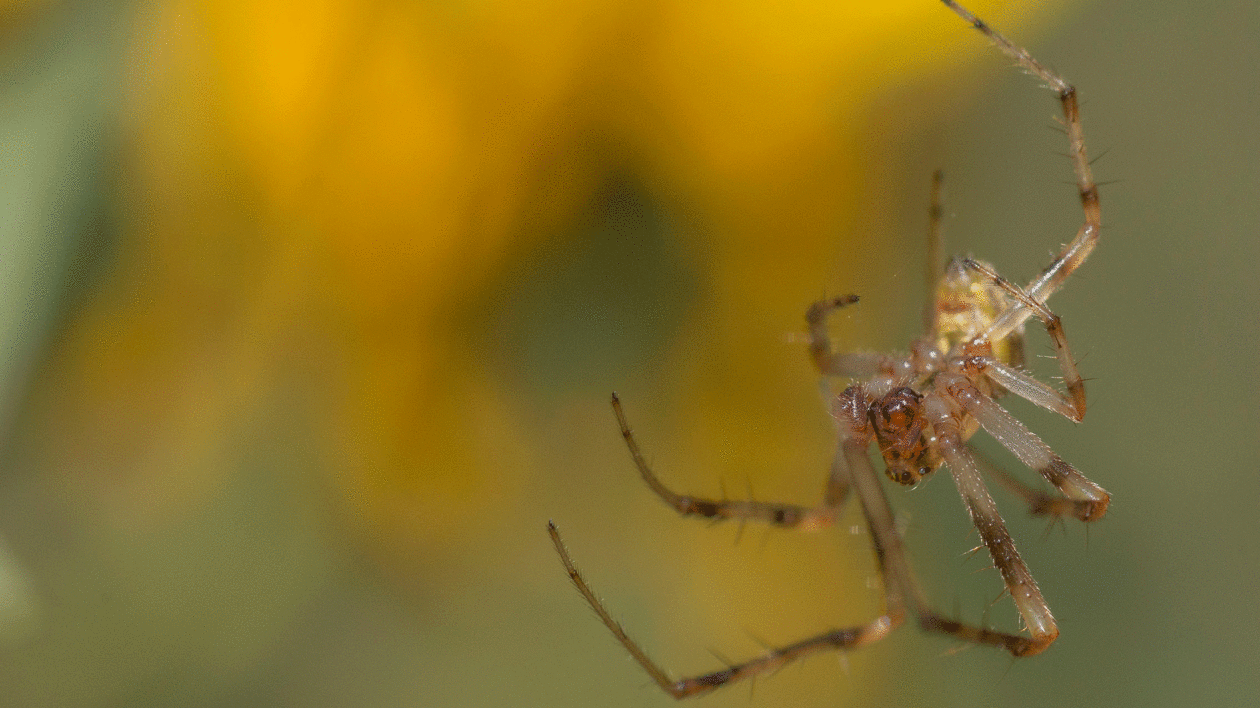
I was thrilled to photograph two different monarch butterflies inside the plot, the more so because of their current population declines.
However, I was equally excited by the sunflower stem that looked like a miniscule woodpecker had drilled a hole into it – clear evidence of a stem borer moth caterpillar at work.
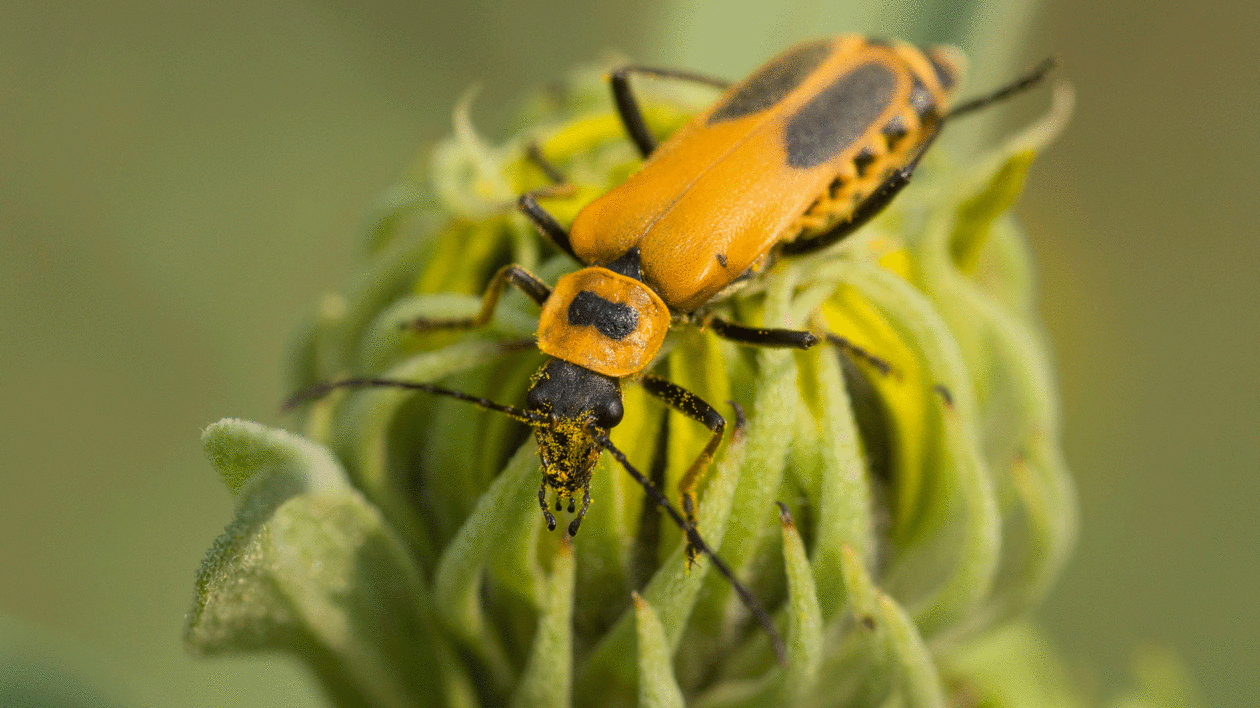
The most diverse group of insects found in my square meter was the flies. There were twenty one different kinds of flies, including some that resemble the familiar house fly, but others that few people would recognize as flies.
For example, a bee-mimicking hover fly was a common visitor throughout much of the season. I also photographed a crane fly that looks like a massive mosquito and a gall midge with an ovipositor (tubular egg-laying organ) as long as its body.
My favorite of the flies, though, was Delphinia picta, a gorgeous picture-winged fly that looks like it’s wearing a gas mask, feeds on rotting vegetation, and blows bubbles as part of its courtship behavior.
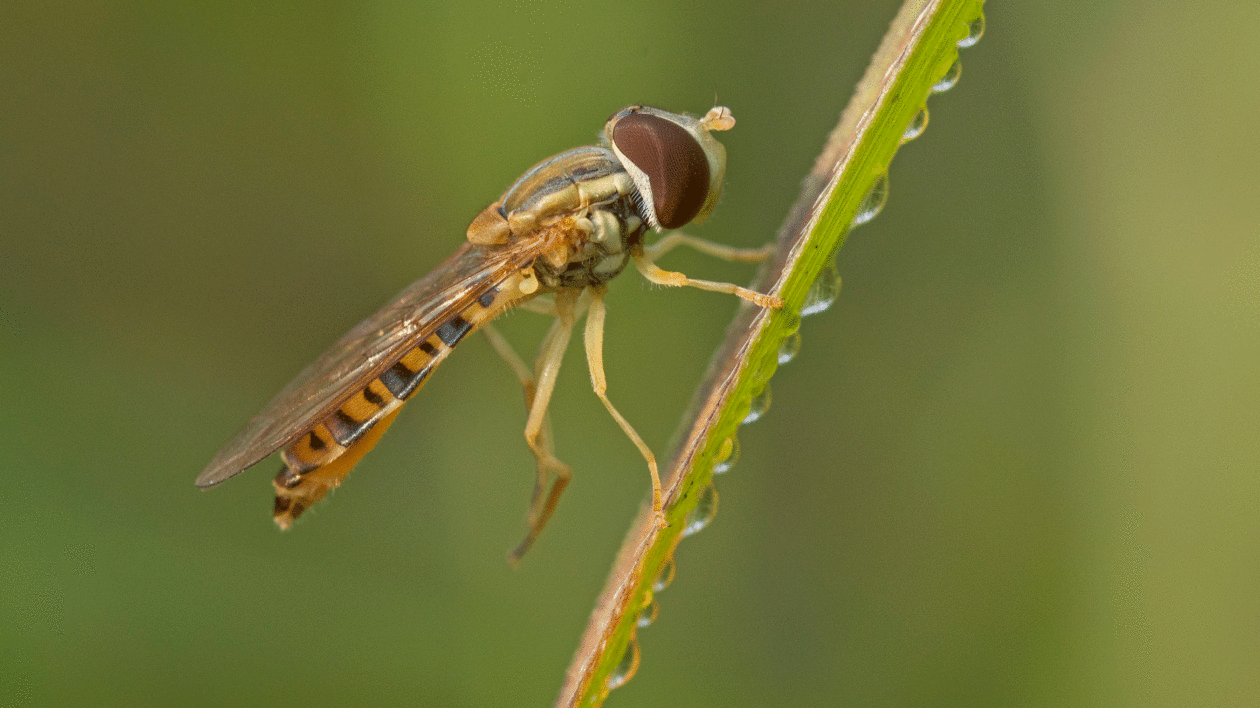
Despite the impressive diversity of organisms I found, this project was about much more than biological inventory. I found myself inspired to photograph tiny feathery anthers on the flowers of grasses, an exquisite network of veins in a backlit leaf, and gracefully drooping petals of flowers as they wilted.
Because I confined my exploration to such a limited geography, I looked at the prairie in new ways. Eschewing my typical photography approach of roaming broadly across prairies, looking for something of interest, I instead sat down and examined my plot inch by inch for appealing subject matter. I always found it. I hope others will find it among my photographs.
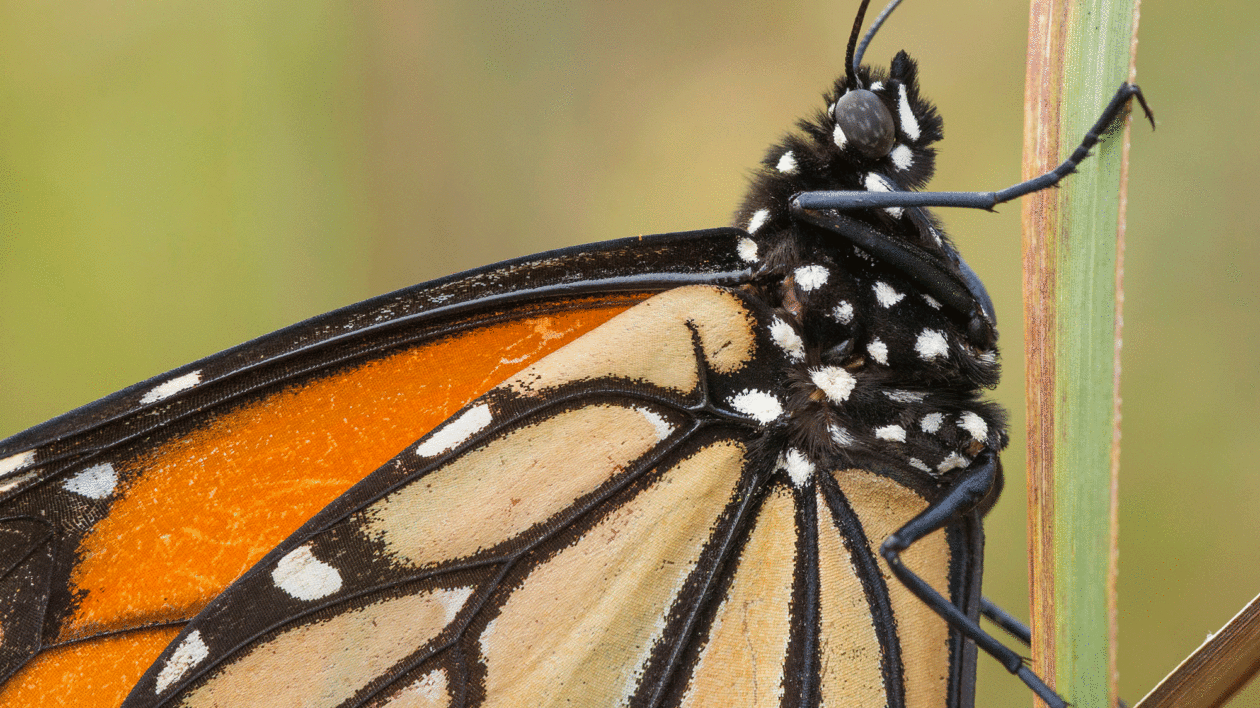
It would be great if thousands of people were sufficiently moved by my project to go explore the nearest prairie. It would be great, but I’m not counting on it. Instead, I’d be thrilled if people took a moment, looked through some of my photos, and thought to themselves, “huh, I had no idea there was so much going on in prairies!”
Just as it’s easier to empathize with people in far-off places after you’ve met a few of them, seeing some of what lives in prairies makes those prairies harder to dismiss as “boring grassy areas.” I love prairies and want to see them conserved. Showing others what I love is an important step in that process.
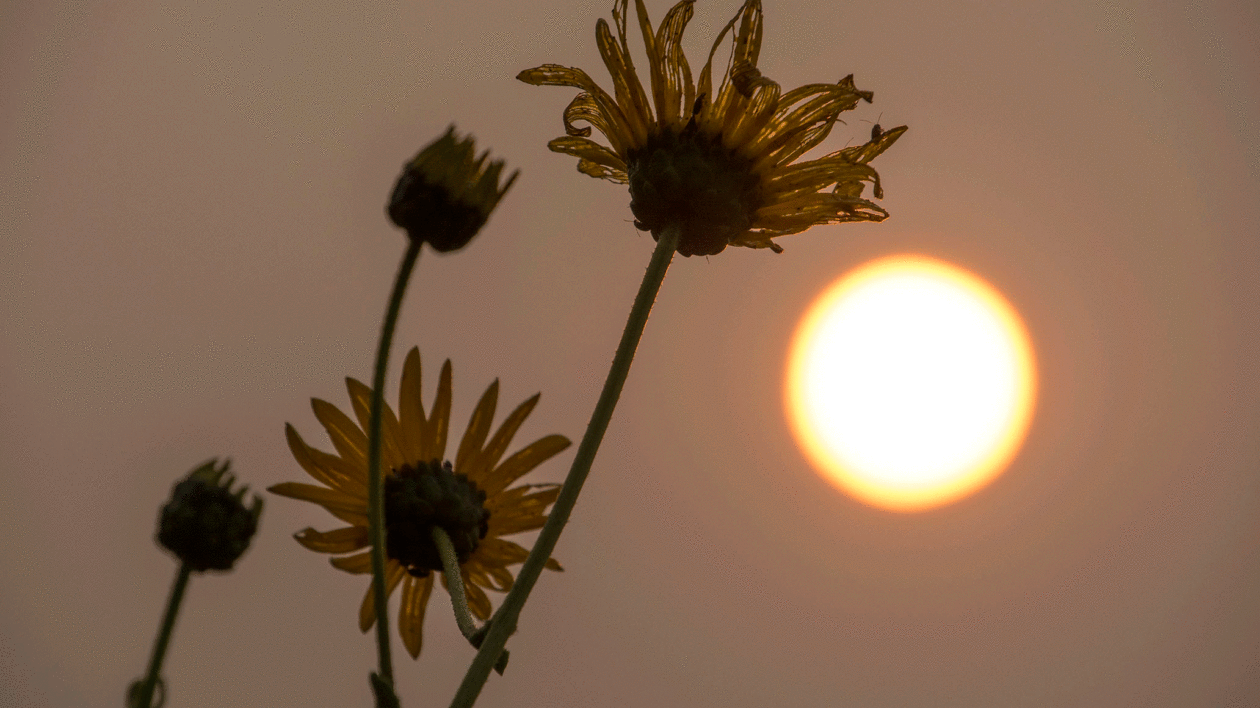
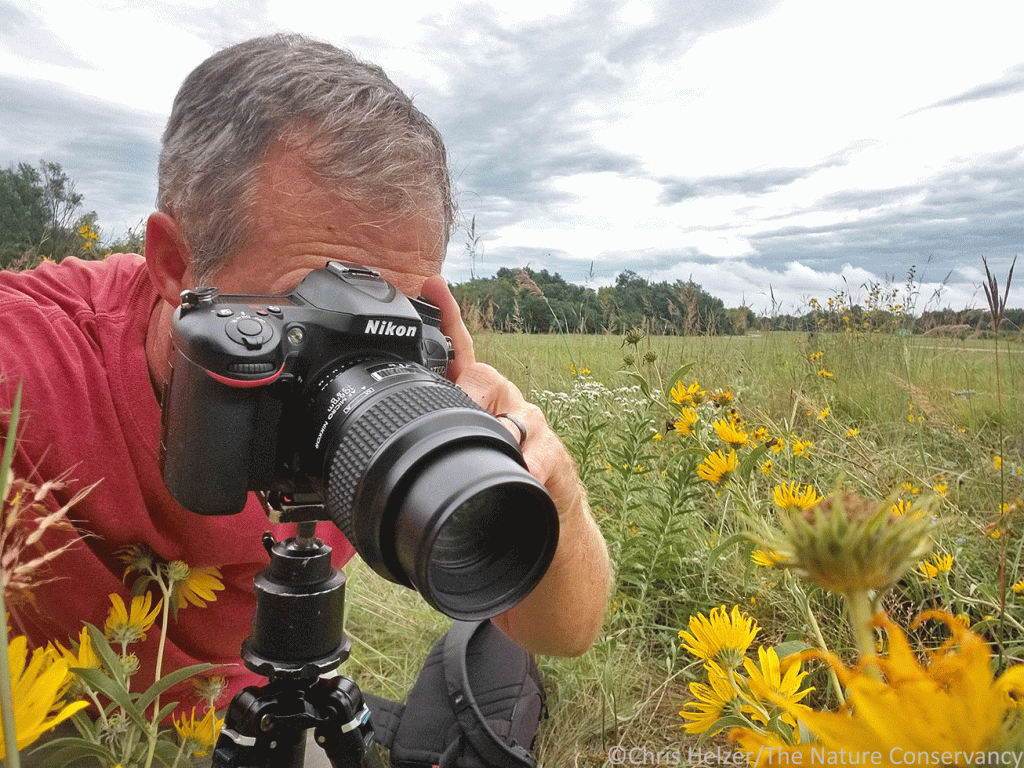



What a wonderful article! I would love to see more of your photos. Am so happy to see new prairies established! Keep up the good work.
I live in the middle of Cambridge, Massachusetts and I have about a 16 square foot plot of what I call “meadow” in front of my house. I have planted a few things in it–some asters, for instance–but most of what fills it to overflowing are what my Mother used to call volunteers, wonderful things that just appear. Every year there is a somewhat different suite of volunteer plants. This past fall I had three kinds of goldenrod, bursting with a wondrous variety of insects. My best visitor though was a praying mantis! No landscape is “boring”–in fact nothing is boring if you take some time to study it. Thank you for your wonderful project.
Love this panoply to the god of small things! Here’s to taking time to not just look but study!
Chris, this is wonderful! I’m doing a similar project in my own backyard and writing about it on my blog (NatureIsMyTherapy.com). Last year I started transforming my garden to native plants, and am using iNaturalist to document the biodiversity I find among the plants. I’ve found it incredibly rewarding to see how many species of pollinators and other insects are living here with me.
Thank you for writing this article. I thoroughly loved seeing some of your photos and the idea of going back to the same spot to really see the diversity of life. Ya gotta love a prairie!
Neat project. I loved seeing what all you found!
I remember doing this kind of observation on a girl scout outing. Your pictures are beautiful!
I am looking forward to attending your presentation in Lincoln tomorrow night. I love your photos and descriptions of what is in them. I want to spend more time in our yard looking for visitors to the plants.
What a wonderful project to undertake! Thank you for sharing your work with us.
Considering what is happening with our national parks with the littering and literal crap everywhere, I’m not so sure you would be interested in thousands of people visiting prairies.
I’d say prairies with litter and crap are infinitely better than extinct prairies covered in pavement or crops because no one cared enough about them to preserve them.
agree with the idea of at least, with exposure & an attempt at education and relating, there is a much better chance of connecting than if the opportunity did not exist.
Such beautiful photos and thanks for the numbers of types of flies, etc. I will share with my environmental science students here in Illinois.
Very cool. Thanks for sharing. You inspire me to do the same on my Klein Prairie restoration near Murrayville, IL.
Beautiful photos! Prairies are so diverse and species rich. With the deep roots of the plants, they are drought resistant, erosion preventers and enrich soils and lives. Keep up the good work.
We have been doing something similar in El Paso, Texas for several years now. We go to the same short loop trail, called the Nature Walk Trail, in Franklin Mountains State Park almost every weekend and photograph whatever we spot. We then post at least 4 dated photos a day on our Facebook page: https://www.facebook.com/Nature-Walk-Trail-568774656515379/. It has turned into an interesting collection of plants, flowers, insects, birds, and other animals. Our idea is to illustrate the natural diversity on the 8 acres of land inside the trail, which is only a small part of the 27,000 acre state park and an even smaller part of the Chihuahuan Desert.
Wonderful idea! Great photos! Awesome discoveries!